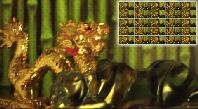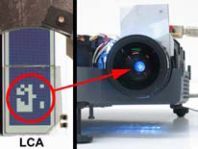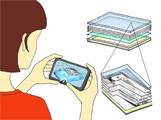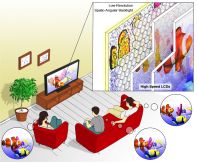
Home | News | Join Us | People | Projects | Publications | Talks | Courses

Home | News | Join Us | People | Projects | Publications | Talks | Courses
| Felix Heide | Gordon Wetzstein | Ramesh Raskar | Wolfgang Heidrich |
SIGGRAPH 2013. ACM Transactions on Graphics 32(4).
Recent years have seen proposals for exciting new computational display technologies that are compressive in the sense that they generate high resolution images or light fields with relatively few display parameters. Image synthesis for these types of displays involves two major tasks: sampling and rendering high-dimensional target imagery, such as light fields or time-varying light fields, as well as optimizing the display parameters to provide a good approximation of the target content. In this paper, we introduce an adaptive optimization framework for compressive displays that generates high quality images and light fields using only a fraction of the total plenoptic samples. We demonstrate the framework for a large set of display technologies, including several types of auto-stereoscopic displays, high dynamic range displays, and high-resolution displays. We achieve significant performance gains, and in some cases are able to process data that would be infeasible with existing methods.
F. Heide, G. Wetzstein, R. Raskar, W. Heidrich. Adaptive Image Synthesis for Compressive Displays. Proc. of SIGGRAPH 2013 (ACM Transactions on Graphics 32, 4), 2013.
BibTeX@article{Heide:2013:AdaptiveImageSynthesis,
author = {F. Heide and G. Wetzstein and R. Raskar and W. Heidrich},
title = {{Adaptive Image Synthesis for Compressive Displays}},
journal = {ACM Trans. Graph. (Proc. SIGGRAPH)},
volume = {32},
number = {4},
year = {2013},
publisher = {ACM},
pages = {1--11},
address = {New York, NY, USA}
}
Technical Details
Gordon Wetzstein, PhD
MIT Media Lab
gordonw (at) media.mit.edu
Press
Alexandra Kahn, Senior Press Liaison, MIT Media Lab
akahn (at) media.mit.edu or 617.253.0365
We thank the reviewers for valuable feedback and J. Gregson, M. Hirsch, and H. Mansour for their support. Felix Heide was supported by a UBC Four Year Doctoral Fellowship. Gordon Wetzstein was supported by an NSERC Postdoctoral Fellowship and the DARPA SCENICC program. Ramesh Raskar was supported by
a Sloan Fellowship and a DARPA Young Faculty Award. Wolfgang Heidrich holds the Dolby Research Chair at UBC. We recognize the support of NSF grants 1116452 and 1218411.
Related Projects





Compressive Light Field Photography (SIG '13)
Coded Aperture Projection (TOG '10, ICCP '13)
Layered 3D (SIG '11)
Polarization Fields (SIG Asia '11)
Tensor Displays (SIG '12)